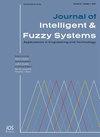新型冠状病毒肺炎流行的时间序列与随机森林混合响应面法分析与预测
IF 1
4区 计算机科学
Q3 COMPUTER SCIENCE, ARTIFICIAL INTELLIGENCE
引用次数: 0
摘要
本文提出了一种混合自回归综合移动平均模型(ARIMA)、随机森林模型(RF)和响应面法(RSM)的流行病预测模型。基于集成经验模态分解(EEMD)的建模过程特别适合于处理非平稳和非线性数据。ARIMA的时效性和差异性具有很强的确定性信息提取能力。射频具有鲁棒性好、稳定性好、速度快、泛化能力强等特点。在响应面的可调节性和对应性下,很好地体现了模型的全面性。以美国为例,利用提出的ARIMA-RF-RSM模型,根据2019年冠状病毒病(COVID-19)早期流行的数据,探讨早期流行的发展机制。该模型具有较高的预测精度,平均绝对百分比误差(MAPE)为1.97%,均方根误差(RSME)为7.24%。有助于及时采取有效的预防和控制措施。此外,该模型对相关地区的疾病传播分析具有普遍适用性。本文章由计算机程序翻译,如有差异,请以英文原文为准。
Analysis and prediction of novel coronavirus pneumonia epidemic using hybrid response surface method with time-series and random forest
This paper proposes a new epidemic prediction model that hybridizes several models, such as the autoregressive integrated moving average model (ARIMA), random forest (RF), and response surface method (RSM). The modeling process based on ensemble empirical mode decomposition (EEMD) is particularly suitable for dealing with non-stationary and nonlinear data. ARIMA’s timeliness and difference have strong deterministic information extraction ability. RF is robust and stable, with fast speed, and strong generalization ability. Under the adjustability and correspondence of the response surface, the comprehensiveness of the model is well demonstrated. Taking the United States as an example, the proposed ARIMA-RF-RSM model is used to explore the development mechanism of the early epidemic according to the data of the early epidemic of coronavirus disease 2019 (COVID-19). The proposed model has high prediction accuracy (mean absolute percentage error (MAPE) is 1.97% and root mean square error (RSME) is 7.24%). It helps to take effective prevention and control measures in time. In addition, the model has universal applicability to the analysis of disease transmission in relevant areas.
求助全文
通过发布文献求助,成功后即可免费获取论文全文。
去求助
来源期刊

Journal of Intelligent & Fuzzy Systems
工程技术-计算机:人工智能
CiteScore
3.40
自引率
10.00%
发文量
965
审稿时长
5.1 months
期刊介绍:
The purpose of the Journal of Intelligent & Fuzzy Systems: Applications in Engineering and Technology is to foster advancements of knowledge and help disseminate results concerning recent applications and case studies in the areas of fuzzy logic, intelligent systems, and web-based applications among working professionals and professionals in education and research, covering a broad cross-section of technical disciplines.
 求助内容:
求助内容: 应助结果提醒方式:
应助结果提醒方式:


